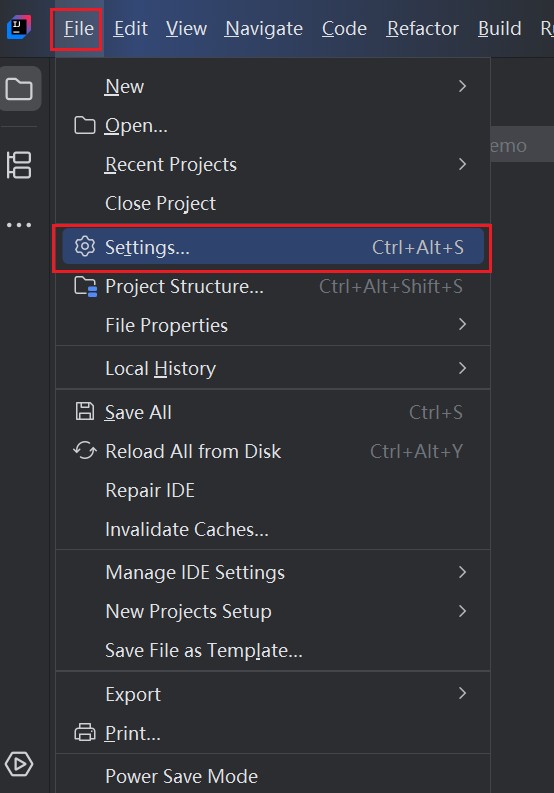1. Easy Rules 概述
规则引擎就是提供一种可选的计算模型。与通常的命令式模型(由带有条件和循环的命令依次组成)不同,规则引擎基于生产规则系统。这是一组生产规则,每条规则都有一个条件(condition)和一个动作(action)———— 简单地说,可以将其看作是一组if-then语句。
精妙之处在于规则可以按任何顺序编写,引擎会决定何时使用对顺序有意义的任何方式来计算它们。考虑它的一个好方法是系统运行所有规则,选择条件成立的规则,然后执行相应的操作。这样做的好处是,很多问题都很自然地符合这个模型:
if car.owner.hasCellPhone then premium += 100;
if car.model.theftRating > 4 then premium += 200;
if car.owner.livesInDodgyArea && car.model.theftRating > 2 then premium += 300;
规则引擎是一种工具,它使得这种计算模型编程变得更容易。它可能是一个完整的开发环境,或者一个可以在传统平台上工作的框架。生产规则计算模型最适合仅解决一部分计算问题,因此规则引擎可以更好地嵌入到较大的系统中。
你可以自己构建一个简单的规则引擎。你所需要做的就是创建一组带有条件和动作的对象,将它们存储在一个集合中,然后遍历它们以评估条件并执行这些动作。
Easy Rules它提供Rule抽象以创建具有条件和动作的规则,并提供RuleEngine API,该API通过一组规则运行以评估条件并执行动作。
Easy Rules简单易用,只需两步:
首先,定义规则,方式有很多种
方式一:注解
|
1
2
3
4
5
6
7
8
9
10
11
12
13
|
@Rule(name = "weather rule", description = "if it rains then take an umbrella")public class WeatherRule { @Condition public boolean itRains(@Fact("rain") boolean rain) { return rain; } @Action public void takeAnUmbrella() { System.out.println("It rains, take an umbrella!"); }} |
方式二:链式编程
|
1
2
3
4
5
6
|
Rule weatherRule = new RuleBuilder() .name("weather rule") .description("if it rains then take an umbrella") .when(facts -> facts.get("rain").equals(true)) .then(facts -> System.out.println("It rains, take an umbrella!")) .build(); |
方式三:表达式
|
1
2
3
4
5
|
Rule weatherRule = new MVELRule() .name("weather rule") .description("if it rains then take an umbrella") .when("rain == true") .then("System.out.println(\"It rains, take an umbrella!\");"); |
方式四:yml配置文件
例如:weather-rule.yml
|
1
2
3
4
5
|
name: "weather rule"description: "if it rains then take an umbrella"condition: "rain == true"actions: - "System.out.println(\"It rains, take an umbrella!\");" |
|
1
2
|
MVELRuleFactory ruleFactory = new MVELRuleFactory(new YamlRuleDefinitionReader());Rule weatherRule = ruleFactory.createRule(new FileReader("weather-rule.yml")); |
接下来,应用规则
|
1
2
3
4
5
6
7
8
9
10
11
12
13
14
15
16
|
public class Test { public static void main(String[] args) { // define facts Facts facts = new Facts(); facts.put("rain", true); // define rules Rule weatherRule = ... Rules rules = new Rules(); rules.register(weatherRule); // fire rules on known facts RulesEngine rulesEngine = new DefaultRulesEngine(); rulesEngine.fire(rules, facts); }} |
入门案例:Hello Easy Rules
|
1
2
3
4
5
|
<dependency> <groupId>org.jeasy</groupId> <artifactId>easy-rules-core</artifactId> <version>4.0.0</version></dependency> |
通过骨架创建maven项目:
|
1
2
3
4
|
mvn archetype:generate \ -DarchetypeGroupId=org.jeasy \ -DarchetypeArtifactId=easy-rules-archetype \ -DarchetypeVersion=4.0.0 |
默认给我们生成了一个HelloWorldRule规则,如下:
|
1
2
3
4
5
6
7
8
9
10
11
12
13
14
15
16
17
18
19
20
|
package com.cjs.example.rules;import org.jeasy.rules.annotation.Action;import org.jeasy.rules.annotation.Condition;import org.jeasy.rules.annotation.Rule;@Rule(name = "Hello World rule", description = "Always say hello world")public class HelloWorldRule { @Condition public boolean when() { return true; } @Action public void then() throws Exception { System.out.println("hello world"); }} |
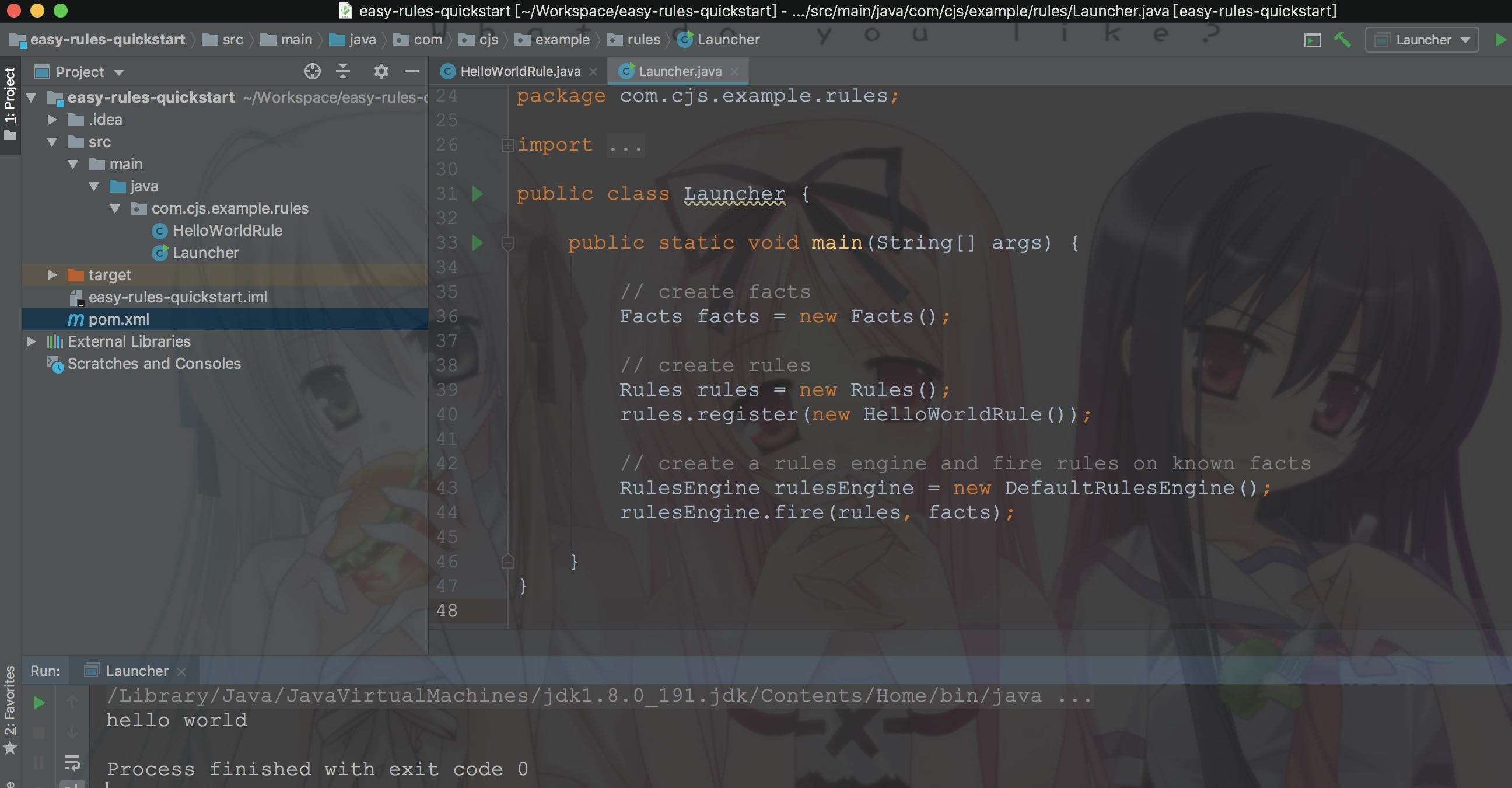
2. 规则定义
2.1. 定义规则
大多数业务规则可以用以下定义表示:
- Name : 一个命名空间下的唯一的规则名称
- Description : 规则的简要描述
- Priority : 相对于其他规则的优先级
- Facts : 事实,可立即为要处理的数据
- Conditions : 为了应用规则而必须满足的一组条件
- Actions : 当条件满足时执行的一组动作
Easy Rules为每个关键点提供了一个抽象来定义业务规则。
在Easy Rules中,Rule接口代表规则
|
1
2
3
4
5
6
7
8
9
10
11
12
13
14
15
16
17
|
public interface Rule { /** * This method encapsulates the rule's conditions. * @return true if the rule should be applied given the provided facts, false otherwise */ boolean evaluate(Facts facts); /** * This method encapsulates the rule's actions. * @throws Exception if an error occurs during actions performing */ void execute(Facts facts) throws Exception; //Getters and setters for rule name, description and priority omitted.} |
evaluate方法封装了必须计算结果为TRUE才能触发规则的条件。execute方法封装了在满足规则条件时应该执行的动作。条件和操作由Condition和Action接口表示。
定义规则有两种方式:
- 通过在POJO类上添加注解
- 通过RuleBuilder API编程
可以在一个POJO类上添加@Rule注解,例如:
|
1
2
3
4
5
6
7
8
9
10
11
12
13
14
15
16
17
18
19
|
@Rule(name = "my rule", description = "my rule description", priority = 1)public class MyRule { @Condition public boolean when(@Fact("fact") fact) { //my rule conditions return true; } @Action(order = 1) public void then(Facts facts) throws Exception { //my actions } @Action(order = 2) public void finally() throws Exception { //my final actions }} |
@Condition注解指定规则条件
@Fact注解指定参数
@Action注解指定规则执行的动作
RuleBuilder支持链式风格定义规则,例如:
|
1
2
3
4
5
6
7
8
|
Rule rule = new RuleBuilder() .name("myRule") .description("myRuleDescription") .priority(3) .when(condition) .then(action1) .then(action2) .build(); |
组合规则
CompositeRule由一组规则组成。这是一个典型地组合设计模式的实现。
组合规则是一个抽象概念,因为可以以不同方式触发组合规则。
Easy Rules自带三种CompositeRule实现:
- UnitRuleGroup : 要么应用所有规则,要么不应用任何规则(AND逻辑)
- ActivationRuleGroup : 它触发第一个适用规则,并忽略组中的其他规则(XOR逻辑)
- ConditionalRuleGroup : 如果具有最高优先级的规则计算结果为true,则触发其余规则
复合规则可以从基本规则创建并注册为常规规则:
|
1
2
3
4
5
6
7
8
9
10
11
|
//Create a composite rule from two primitive rulesUnitRuleGroup myUnitRuleGroup = new UnitRuleGroup("myUnitRuleGroup", "unit of myRule1 and myRule2");myUnitRuleGroup.addRule(myRule1);myUnitRuleGroup.addRule(myRule2);//Register the composite rule as a regular ruleRules rules = new Rules();rules.register(myUnitRuleGroup);RulesEngine rulesEngine = new DefaultRulesEngine();rulesEngine.fire(rules, someFacts); |
每个规则都有优先级。它代表触发注册规则的默认顺序。默认情况下,较低的值表示较高的优先级。可以重写compareTo方法以提供自定义优先级策略。
2.2. 定义事实
在Easy Rules中,Fact API代表事实
|
1
2
3
4
|
public class Fact<T> { private final String name; private final T value;} |
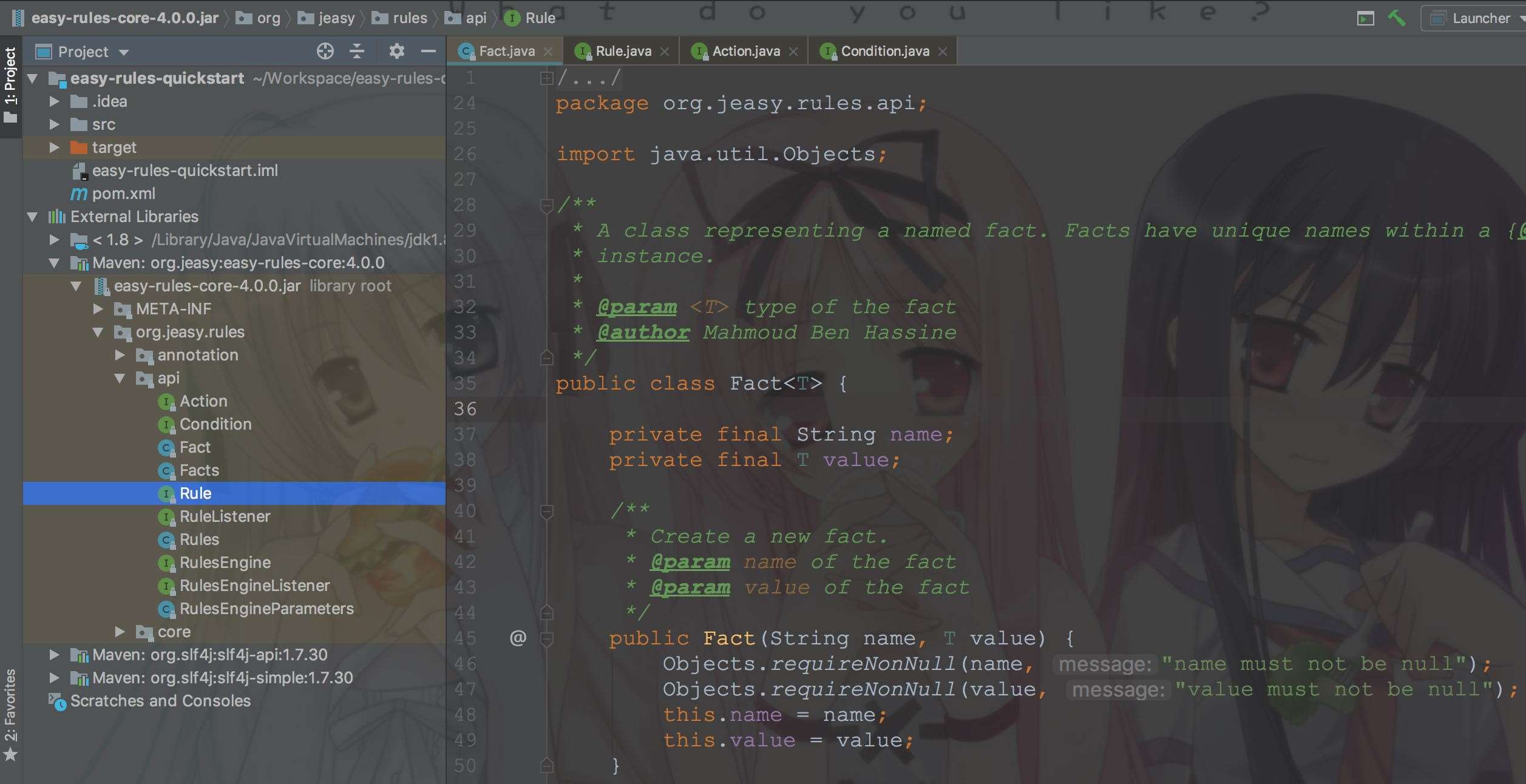
举个栗子:
|
1
2
3
|
Fact<String> fact = new Fact("foo", "bar");Facts facts = new Facts();facts.add(fact); |
或者,也可以用这样简写形式
|
1
2
|
Facts facts = new Facts();facts.put("foo", "bar"); |
用@Fact注解可以将Facts注入到condition和action方法中
|
1
2
3
4
5
6
7
8
9
10
11
12
13
14
15
|
@Ruleclass WeatherRule { @Condition public boolean itRains(@Fact("rain") boolean rain) { return rain; } @Action public void takeAnUmbrella(Facts facts) { System.out.println("It rains, take an umbrella!"); // can add/remove/modify facts }} |
2.3. 定义规则引擎
Easy Rules提供两种RulesEngine接口实现:
- DefaultRulesEngine : 根据规则的自然顺序应用规则
- InferenceRulesEngine : 持续对已知事实应用规则,直到不再适用任何规则为止
创建规则引擎:
|
1
2
3
4
5
|
RulesEngine rulesEngine = new DefaultRulesEngine();// orRulesEngine rulesEngine = new InferenceRulesEngine(); |
然后,注册规则
|
1
|
rulesEngine.fire(rules, facts); |
规则引擎有一些可配置的参数,如下图所示:
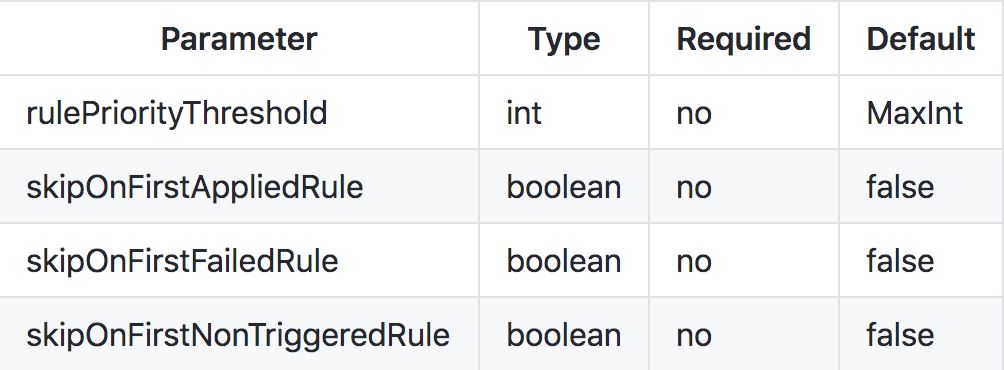
举个栗子:
|
1
2
3
4
5
6
7
|
RulesEngineParameters parameters = new RulesEngineParameters() .rulePriorityThreshold(10) .skipOnFirstAppliedRule(true) .skipOnFirstFailedRule(true) .skipOnFirstNonTriggeredRule(true);RulesEngine rulesEngine = new DefaultRulesEngine(parameters); |
2.4. 定义规则监听器
通过实现RuleListener接口
|
1
2
3
4
5
6
7
8
9
10
11
12
13
14
15
16
17
18
19
20
21
22
23
24
25
26
27
28
29
30
31
32
33
34
35
36
37
38
39
40
41
42
43
44
45
46
47
48
49
50
51
52
53
54
55
56
57
|
public interface RuleListener { /** * Triggered before the evaluation of a rule. * * @param rule being evaluated * @param facts known before evaluating the rule * @return true if the rule should be evaluated, false otherwise */ default boolean beforeEvaluate(Rule rule, Facts facts) { return true; } /** * Triggered after the evaluation of a rule. * * @param rule that has been evaluated * @param facts known after evaluating the rule * @param evaluationResult true if the rule evaluated to true, false otherwise */ default void afterEvaluate(Rule rule, Facts facts, boolean evaluationResult) { } /** * Triggered on condition evaluation error due to any runtime exception. * * @param rule that has been evaluated * @param facts known while evaluating the rule * @param exception that happened while attempting to evaluate the condition. */ default void onEvaluationError(Rule rule, Facts facts, Exception exception) { } /** * Triggered before the execution of a rule. * * @param rule the current rule * @param facts known facts before executing the rule */ default void beforeExecute(Rule rule, Facts facts) { } /** * Triggered after a rule has been executed successfully. * * @param rule the current rule * @param facts known facts after executing the rule */ default void onSuccess(Rule rule, Facts facts) { } /** * Triggered after a rule has failed. * * @param rule the current rule * @param facts known facts after executing the rule * @param exception the exception thrown when attempting to execute the rule */ default void onFailure(Rule rule, Facts facts, Exception exception) { }} |
3. 示例
|
1
2
3
4
5
6
7
8
9
10
11
12
13
14
15
16
17
18
19
20
21
22
23
24
25
26
27
28
29
30
|
<modelVersion>4.0.0</modelVersion> <groupId>com.cjs.example</groupId> <artifactId>easy-rules-quickstart</artifactId> <version>1.0.0-SNAPSHOT</version> <packaging>jar</packaging> <dependencies> <dependency> <groupId>org.jeasy</groupId> <artifactId>easy-rules-core</artifactId> <version>4.0.0</version> </dependency> <dependency> <groupId>org.jeasy</groupId> <artifactId>easy-rules-support</artifactId> <version>4.0.0</version> </dependency> <dependency> <groupId>org.jeasy</groupId> <artifactId>easy-rules-mvel</artifactId> <version>4.0.0</version> </dependency> <dependency> <groupId>org.slf4j</groupId> <artifactId>slf4j-simple</artifactId> <version>1.7.30</version> </dependency> </dependencies></project> |
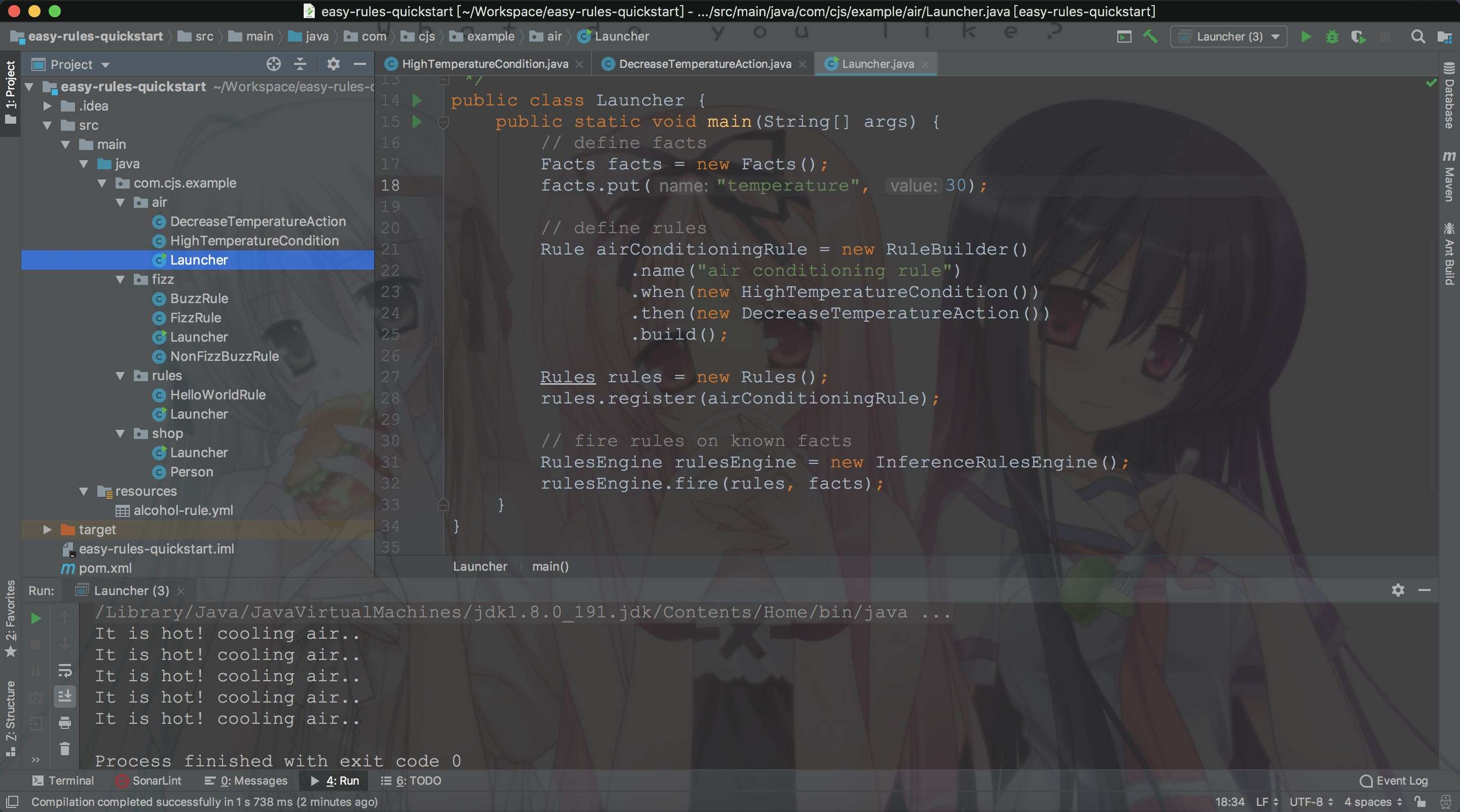
4. 扩展
规则本质上是一个函数,如y=f(x1,x2,..,xn)
规则引擎就是为了解决业务代码和业务规则分离的引擎,是一种嵌入在应用程序中的组件,实现了将业务决策从应用程序代码中分离。
还有一种常见的方式是Java+Groovy来实现,Java内嵌Groovy脚本引擎进行业务规则剥离。

